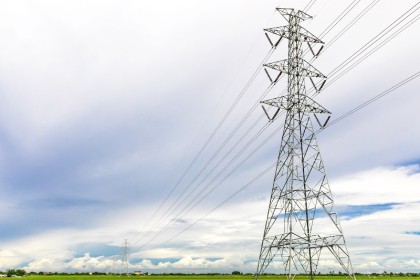
What Are Controlled Release Fertilisers?
Put your plants on a steady diet of nutrients with controlled release fertilisers from Haifa Group. Learn more about this invaluable resource today!
With the growing need for sustainable agriculture practices, fertiliser manufacturers sought to develop more efficient and sustainable ways to deliver nutrition to crops. This is where controlled-release fertilisers (CRFs) play their role.
According to Farmers Review Africa, Global Market Inc. estimates that the market for controlled release fertilisers is growing in size - with a potential of reaching R 71 908 005 000,00 by the end of 2024.
So as you can see, these speciality fertilisers are becoming increasingly popular and important for modern-day agriculture. But what exactly are they, and how do they work?
This article will answer all of your questions and more!
What Are Controlled Release Fertilisers?
This is a special type of fertiliser that releases nutrients slowly and steadily over a period of time. The controlled manner in which these fertilisers work helps minimise the risk of over-fertilising, a common issue with traditional fertilisers.
Traditional fertilisers have served this purpose for generations, but they often come with challenges such as nutrient runoff, leaching, and the need for frequent applications. CRFs address these issues by releasing nutrients slowly over time, meaning your crops get a consistent supply of fertiliser without the worry of nutrient runoff or leaching.
How Do Controlled Release Fertilisers Work?
A release fertiliser is a type of fertiliser that is enclosed in a round prill made of a polymer coating. The fertiliser inside is water soluble and slowly dissolves as water seeps through the small holes in the coating. This process allows the fertiliser to gradually release into the soil over time.
The rate of nutrient release is affected by a number of factors, such as temperature and soil moisture levels. For example, the fertiliser may dissolve faster than expected in warm climates, while cooler temperatures can cause it to slow down.
What Are The Benefits Of Using Controlled Release Fertilisers?
1) Optimal Plant Development:
For plants to develop, they need the right amount of nutrients - just like humans do! With CRFs, you don't have to worry about over-fertilising, as the nutrients are released in a controlled manner. This helps to ensure that your plants get the optimal amount of nutrients over time, boosting their growth and development.
2) Fewer Fertilisers Are Needed:
CRFs are highly concentrated, so you need less of them than traditional fertilisers. This means that your soil won't be saturated with nutrients, and you can save money on fertiliser costs.
3) Saves Labour and Time:
A single dose of CRFs can last for several months, so you don't have to worry about frequent applications. This saves labour and time as you only need to apply it once instead of every few weeks or months.
4) Easy and Simple Application:
Soil application of CRFs is simple and easy - just sprinkle the fertiliser on top of the soil, and you're done! There's no need to mix or dilute the fertiliser before use, and it won't clump or stick together.
What Are The Drawbacks Of Using Controlled Release Fertilisers?
1) Flexibility:
Once it's applied, you cannot adjust the rate of release. If the environment changes or you want to increase/decrease the amount of nutrients being released, you'll need to re-apply the fertiliser.
2) Expensive:
CRFs are generally more expensive than traditional fertilisers, which means that you may have to pay more for the same amount of nutrients. S&P Global Commodity Insights states that because CRFs are so expensive, they're mostly used in "niche" markets such as golf courses, landscaping, nurseries, and greenhouses.
3) Difficult To Store:
CRFs are more difficult to store than traditional fertilisers as they're sensitive to heat and moisture. If the fertiliser gets too hot or moist, it can become unstable and release its nutrients too quickly. Therefore, you need to take extra care when storing CRFs.
CRFs in South Africa - Wrapping Up
Now that some of your questions have been answered, you can make an informed decision on whether to use controlled-release fertilisers in South Africa.
While they do have some drawbacks, such as high cost and difficulty of storage, the advantages of using CRFs in South Africa outweigh any drawbacks.
You can shop around at Haifa Group to find the perfect CRF for your needs. With over 30 years of experience, Haifa Group provides quality products designed to give you the best results!
But, if you're still unsure, contact us today to discuss what type of fertiliser is best for you.
We can work together to find a solution that meets your needs and gives you the best results!












